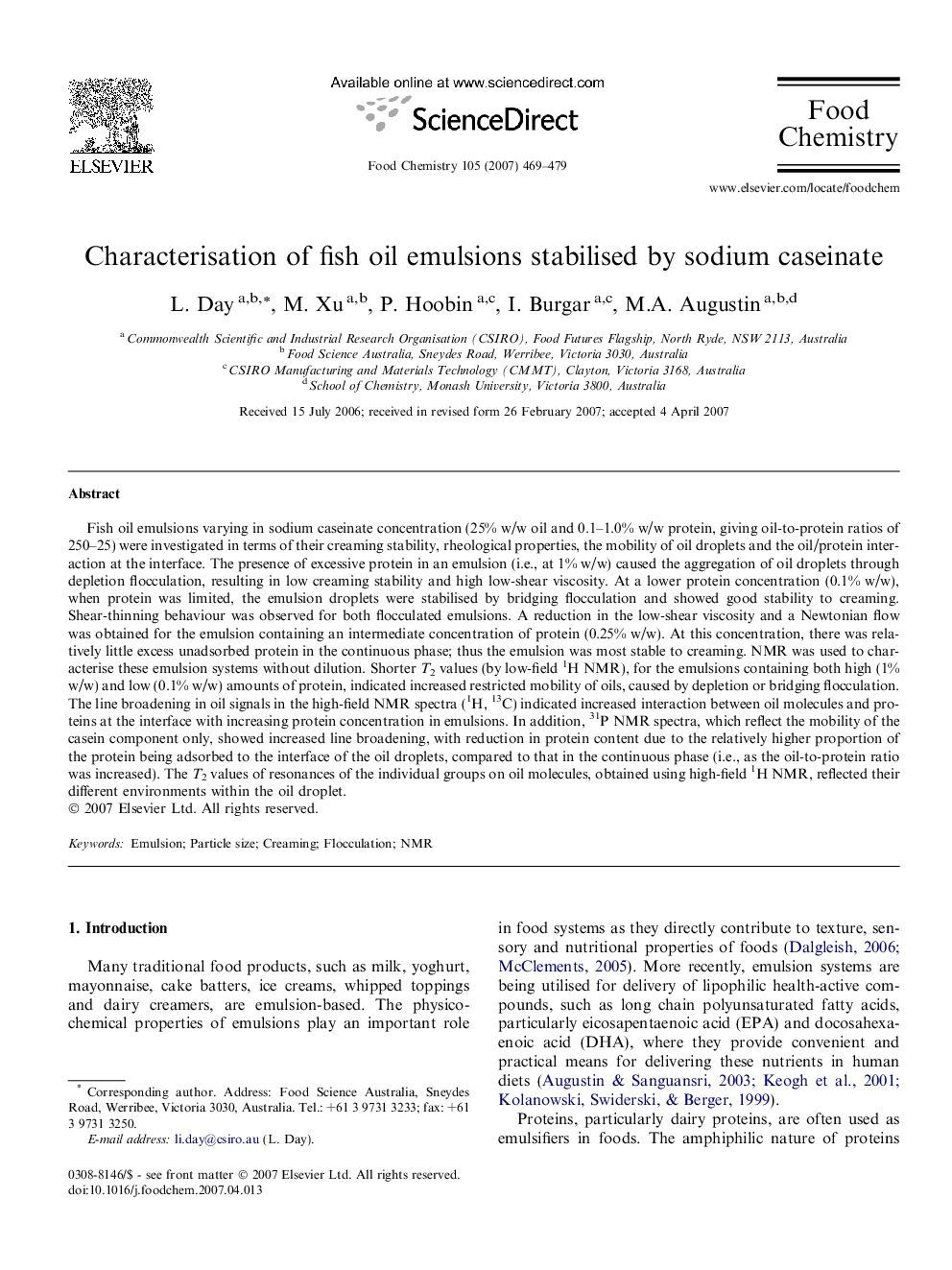| کد مقاله | کد نشریه | سال انتشار | مقاله انگلیسی | نسخه تمام متن |
|---|---|---|---|---|
| 1189508 | 963513 | 2007 | 11 صفحه PDF | دانلود رایگان |

Fish oil emulsions varying in sodium caseinate concentration (25% w/w oil and 0.1–1.0% w/w protein, giving oil-to-protein ratios of 250–25) were investigated in terms of their creaming stability, rheological properties, the mobility of oil droplets and the oil/protein interaction at the interface. The presence of excessive protein in an emulsion (i.e., at 1% w/w) caused the aggregation of oil droplets through depletion flocculation, resulting in low creaming stability and high low-shear viscosity. At a lower protein concentration (0.1% w/w), when protein was limited, the emulsion droplets were stabilised by bridging flocculation and showed good stability to creaming. Shear-thinning behaviour was observed for both flocculated emulsions. A reduction in the low-shear viscosity and a Newtonian flow was obtained for the emulsion containing an intermediate concentration of protein (0.25% w/w). At this concentration, there was relatively little excess unadsorbed protein in the continuous phase; thus the emulsion was most stable to creaming. NMR was used to characterise these emulsion systems without dilution. Shorter T2 values (by low-field 1H NMR), for the emulsions containing both high (1% w/w) and low (0.1% w/w) amounts of protein, indicated increased restricted mobility of oils, caused by depletion or bridging flocculation. The line broadening in oil signals in the high-field NMR spectra (1H, 13C) indicated increased interaction between oil molecules and proteins at the interface with increasing protein concentration in emulsions. In addition, 31P NMR spectra, which reflect the mobility of the casein component only, showed increased line broadening, with reduction in protein content due to the relatively higher proportion of the protein being adsorbed to the interface of the oil droplets, compared to that in the continuous phase (i.e., as the oil-to-protein ratio was increased). The T2 values of resonances of the individual groups on oil molecules, obtained using high-field 1H NMR, reflected their different environments within the oil droplet.
Journal: Food Chemistry - Volume 105, Issue 2, 2007, Pages 469–479